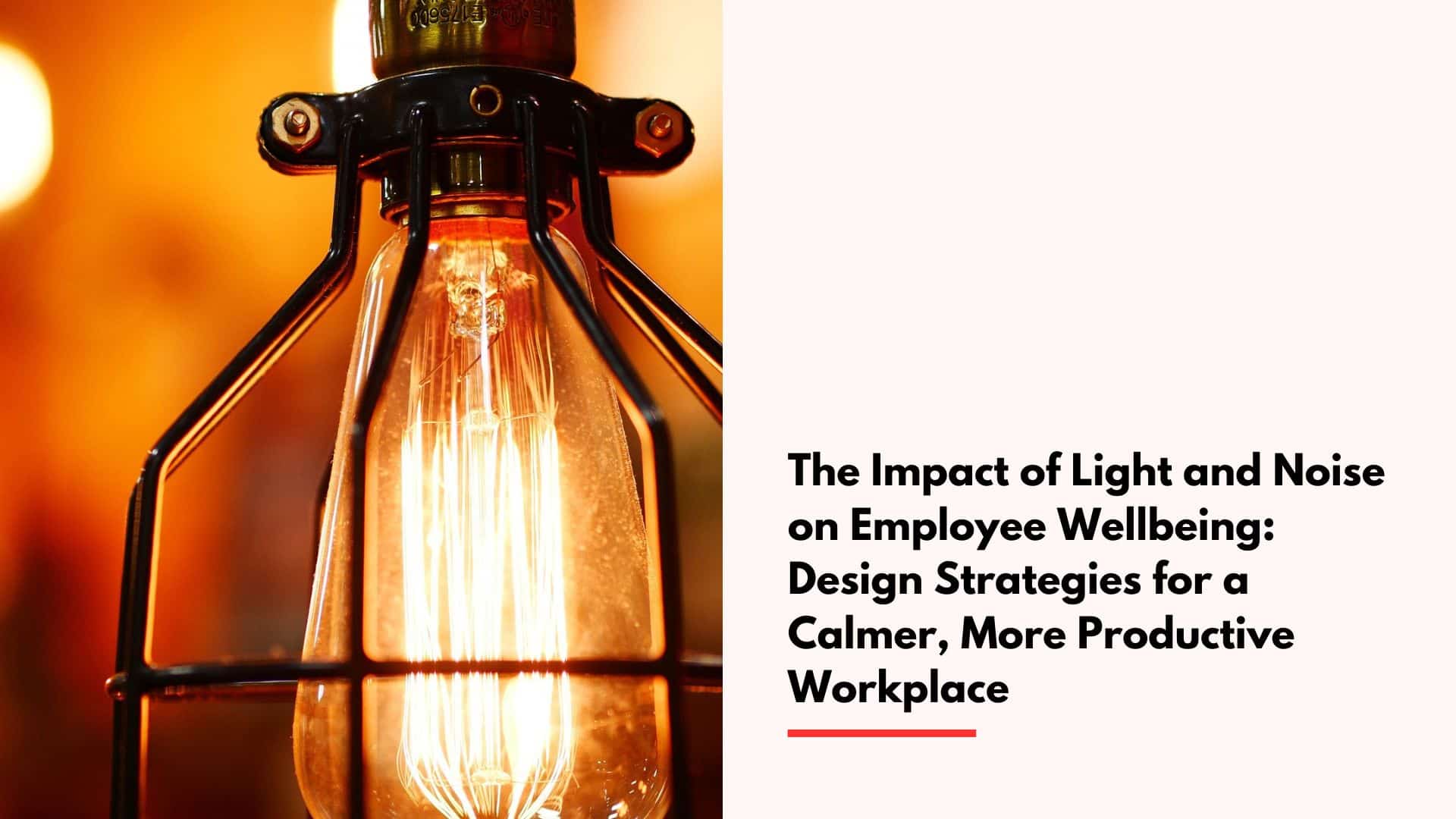The modern workplace has undergone a significant transformation. Gone are the days of isolated cubicles; today’s open-plan offices prioritize collaboration and interaction. While this fosters teamwork, it also introduces new challenges – namely, light and noise pollution. Here’s how these factors impact employee wellbeing and productivity, along with design strategies from office interior designers to create a calmer, more productive work environment.
The Unseen Influence of Light
Lighting plays a crucial role in regulating our circadian rhythm, the internal clock that governs sleep and wakefulness. Studies have shown that exposure to natural light during the day boosts alertness, mood, and cognitive function. Conversely, inadequate or harsh lighting can lead to eye strain, headaches, and fatigue. Here’s where office interior designers can intervene:
- Maximize Natural Light: Office interior designers can strategically position desks near windows to optimize access to natural light. Additionally, skylights, light shelves, and atrium designs can further distribute daylight throughout the space.
- Embrace Biodynamic Lighting: Biodynamic lighting systems mimic the natural light spectrum. These systems adjust color temperature and intensity throughout the day, promoting alertness during working hours and supporting a healthy sleep cycle after work.
- Provide Task Lighting Options: Office interior designers can incorporate individual task lighting fixtures on desks. This allows employees to adjust brightness and focus light on specific areas, reducing eye strain and improving visual comfort.
The Detrimental Effects of Noise
Open-plan offices, while fostering collaboration, can also become breeding grounds for noise pollution. Studies have shown that constant background noise disrupts concentration, increases stress levels, and hinders productivity. Here’s how office interior designers can combat noise:
- Acoustic Zoning: Office interior designers can create designated quiet zones for focused work. These can be enclosed spaces with soundproofed walls and doors. Additionally, breakout areas with soft furnishings can offer a haven for informal meetings without disrupting others.
- Sound-Absorbing Materials: Office interior designers can incorporate sound-absorbing materials like acoustic panels, fabric wall coverings, and noise-dampening ceilings throughout the workspace. These materials help trap and diffuse sound waves, reducing overall noise levels.
- Privacy Screens: Office interior designers can utilize strategically placed privacy screens to create visual and acoustic barriers between desks. This helps limit noise distractions and encourages focused work without sacrificing the open-plan layout’s benefits.

Beyond Light and Noise: A Holistic Approach
While lighting and noise are key considerations, creating a truly calming and productive workspace requires a holistic approach. Here are additional strategies office interior designers can recommend:
- Biophilic Design: Studies have shown that incorporating nature into the workplace reduces stress and improves mood. Office interior designers can achieve this through living walls, plants on workstations, and nature-inspired color palettes.
- Temperature Control: Maintaining a comfortable ambient temperature is essential. Office interior designers can recommend energy-efficient HVAC systems or smart thermostats that adjust temperature based on occupancy.
- Ergonomic Furniture: Incorrect posture due to poorly designed furniture can lead to discomfort and fatigue. Office interior designers can ensure workstations are ergonomically designed, promoting healthy posture and reducing musculoskeletal strain.
Investing in Employee Wellbeing
By incorporating these design strategies, office interior designers can transform workplaces into environments that prioritize employee wellbeing and productivity. Studies have shown that improved lighting and noise control lead to increased employee satisfaction, reduced absenteeism, and a significant boost in productivity.
Investing in employee wellbeing isn’t just about creating a pleasant workspace; it’s a strategic investment in your company’s success. They can be valuable partners in this endeavor, helping you create a work environment that fosters creativity, collaboration, and a sense of well-being for your employees.
